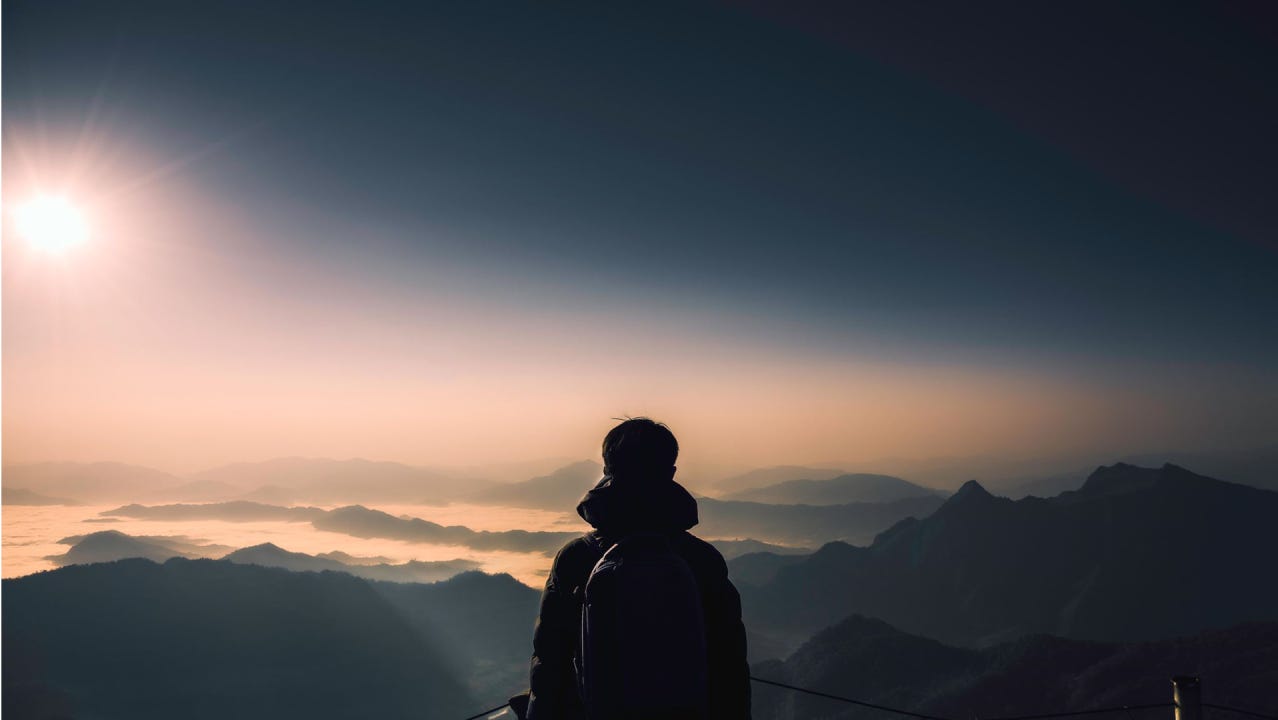Walking the Razor's Edge
Not where things end, but where they begin
Dear Reader
I have been watching my fourteen-month-old learn to navigate her world. She is fearless in her curiosity, always ready to climb, crawl, and explore. At the same time, she has a remarkable sense of when she has gone too far. One moment stays with me. In a split second she launched herself off the bed while my wife was not looking and hit her eyebrow on the corner of the nightstand. It was a painful lesson, yet one she never forgot. Now, when she wants to get off the bed, she reaches out for a hand.
She is not timid. She is brave, and she is also wise enough to adjust after finding the edge. That balance between courage and correction is what allows her to move forward with more freedom.
Somewhere between arriving on this planet and becoming adults, most of us lose that natural balance. We become conditioned to fear the limits and stay far away from them. Parents, teachers, and others in positions of authority often use coercive tactics to keep us in line. As children, our deepest drive is to remain connected to the people we depend on, so we choose to appease rather than push the limits. Over time, this survival strategy dulls our willingness to test edges, leaving us cautious and hesitant long after the need to appease has passed.
What Have I Been Learning?
Life is about finding the limits, not to avoid them but to navigate beyond them. Without testing those edges we hesitate and hold back. With clarity we gain speed.
Lately, I have been practicing something simple yet difficult. I stay present in the moments when fear begins to rise. Instead of rushing past the discomfort or choosing the safer option that avoids it, I pause. I notice the reaction in my body, I sit with it, and then I coach myself to lean toward the fear rather than away from it. That shift changes everything. The very sensation that once made me want to retreat becomes the signal to step forward.
Mentors and coaches help accelerate this process because they have already walked close to the edge and built maps of where it lies. They cannot remove the fear for you, although they can show you that it is possible to move through it. Their guidance reminds us that freedom lies not in avoiding the edge but in discovering exactly where it is. That is why I have always sought out the best coaches and mentors I could find, world class people who have already built the thinking that made them successful and who are willing to share it with those who are ready to act on it.
Where Have My Travels Taken Me?
I once traveled to Ghana with a man I had only met a few times. Most people would have called it reckless, and my wife certainly thought it was a questionable decision. I chose not to come up with excuses for why it might not work out. Instead, I leaned into the possibility that it could lead to something remarkable.
That decision opened doors to experiences I could never have imagined. When we arrived in Accra, we were escorted off the plane in a private car and taken directly to the VIP area of the airport. Later, I found myself standing beside him as one of his groomsmen in a spontaneous wedding. None of that would have happened if I had let fear or hesitation hold me back. By stepping toward the unknown, I discovered a richness that only reveals itself on the other side of risk.
What Am I Reading?
I have been revisiting James Clear’s Atomic Habits, a book I first read some time ago yet find myself returning to often. Each time I open it I am reminded of the power of small, deliberate actions. Transformations rarely come from dramatic leaps. They are built through consistent choices that compound over time.
In the context of testing limits, habits provide a way to move closer to fear without being paralyzed by it. Each small action becomes proof that what once looked like a cliff is simply another step forward. By stacking those steps day after day, the limits shift, and what once felt risky becomes the new baseline.
Closing Insight
Greatness is not achieved by staying far away from the edge. It comes from approaching it, testing it, and learning from it. My daughter’s leap off the bed was painful, yet it gave her the clarity to move more safely and confidently the next time. The same is true in life. The cliff we fear is rarely a cliff at all. It is a bump in the path, and once you know where it is, you can move forward with freedom and speed.
Until next time,
Kursten

